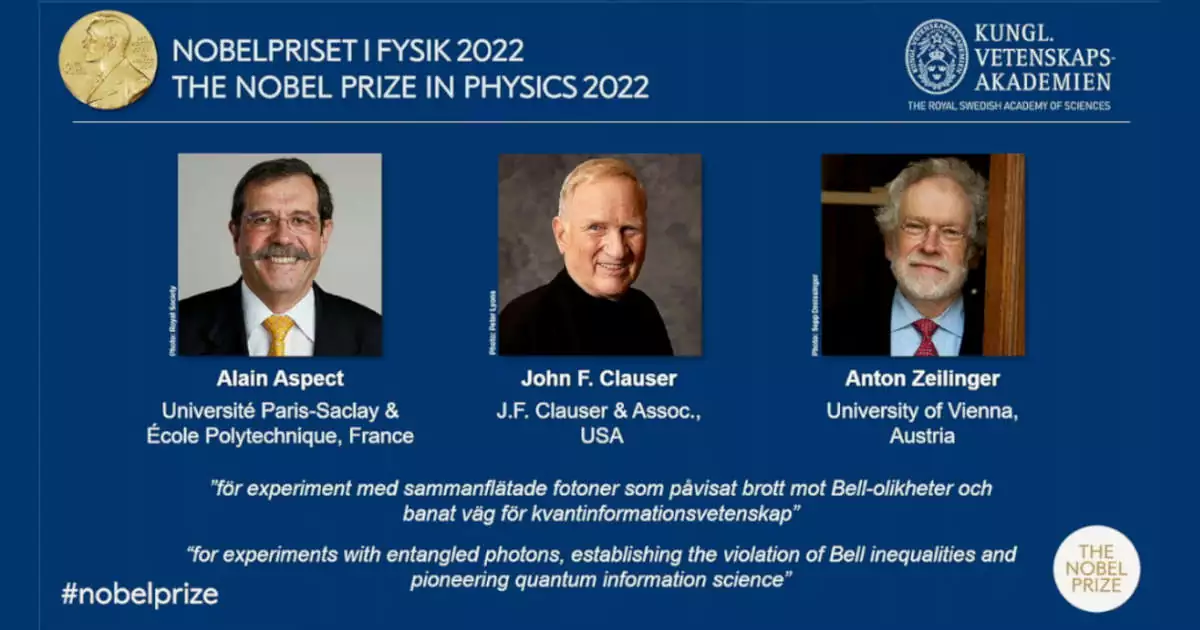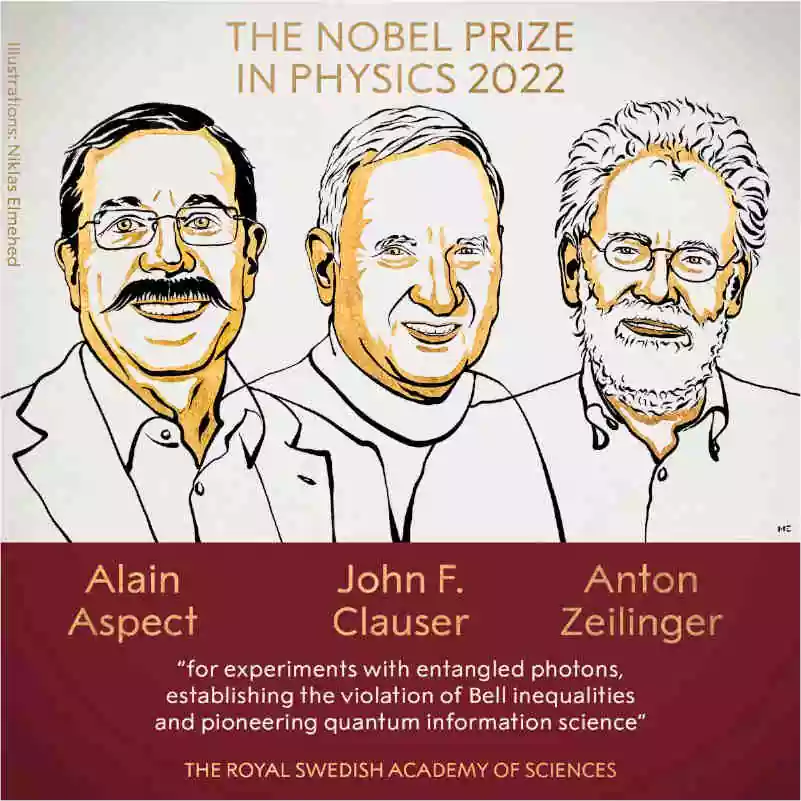

This year’s Nobel Prize in Physics goes to John Clauser, Alain Aspect, and Anton Zeilinger for their work on the principles of quantum information technology — particularly quantum entanglement, which provides the foundation for current advancements in quantum cryptography and quantum computers.
This was announced by the Nobel Committee of the Royal Swedish Academy of Sciences in Stockholm. The three researchers received the Wolf Prize for Physics in 2010 for the same work.
“Alain Aspect, John Clauser, and Anton Zeilinger have each conducted groundbreaking experiments using entangled quantum states, where two particles behave like a single unit even when they are separated. Their results have cleared the way for new technology based upon quantum information.” — explained the Nobel committee.
Quantum entanglement is a phenomenon that occurs when two particles share the same quantum state no matter how far apart they are. That is, knowing the state of one, you can automatically know the state of the other. And this is very useful because it allows us to find new ways of storing, transferring and processing information.
It is something that still has much to investigate. However, it can be studied thanks to the work of each of the three winners of the Nobel Prize in Physics — the first experiments of the 1970s, 80s and 90s, which today form the basis of quantum cryptography and quantum computing, were awarded.
On the one hand, we have American John Clauser, who built a device that emitted two entangled photons at once, each fired at a filter that tested its polarization. The results agreed with the predictions of quantum mechanics.
On the other hand, Frenchman Alain Aspect managed to “change measurement settings after an entangled pair had left its source“. In this way, the configuration that existed when they were issued could not affect the result.
Finally, Austrian Anton Zeilinger has demonstrated a phenomenon called quantum teleportation. This makes it possible to move a quantum state from one particle to another at a distance. And it is very interesting because it could allow the creation of quantum computer networks capable of transmitting information at ultra-fast speeds.
Knowledge in the field of quantum mechanics is very relevant today for the development of superfast quantum computers.





